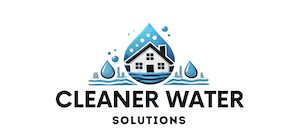As a homeowner, ensuring your family has access to safe, clean drinking water is essential. Whether you rely on well water or municipal treated water, contaminants can still be present in your supply, posing potential health risks for you and your loved ones. Testing your water is the first step to identifying any issues and finding a solution. In this guide, we’ll walk you through simple steps for testing your water and understanding your results. And if you need help, our company- Cleaner Water Solutions offer free, comprehensive water testing services to help you find the right water treatment solution for your home or business.
Why Testing Your Water is Important
Water contamination can happen at any point in the process—whether through natural sources, such as minerals seeping into your well, or due to aging pipes and infrastructure in municipal systems. According to the Environmental Protection Agency (EPA), contaminants like lead, nitrates, bacteria, and other harmful chemicals can sometimes be present even in treated water that meets federal standards.
Regular testing is essential for several reasons:
Health: Contaminated water can cause a variety of health issues, from gastrointestinal illnesses caused by bacteria to long-term effects like developmental issues from lead exposure.
Appliance Longevity: Hard water or high mineral content can damage plumbing and shorten the lifespan of appliances like dishwashers and water heaters.
Peace of Mind: Knowing what’s in your water allows you to address potential problems before they cause harm to your family or home.
When Should You Test Your Water?
Annually for Well Water: If you have a private well, the EPA recommends testing your water at least once a year for contaminants like bacteria, nitrates, and any specific pollutants common in your area.
After Plumbing or Environmental Changes: Test your water if there have been major changes in plumbing, after flooding, or after other environmental events that could affect water quality.
If You Notice Changes: Any sudden changes in the taste, smell, or appearance of your water could indicate contamination. Testing in these cases is crucial.
When Buying a New Home: If you’re purchasing a home with a well, it’s critical to test the water to ensure it’s safe and free of harmful contaminants before moving in.
What Should You Test For?
Depending on whether you rely on well water or treated municipal water, here are the most common contaminants you should test for:
Bacteria and Viruses: Test for E. coli, coliform bacteria, and other pathogens that can cause gastrointestinal illnesses. These are more common in well water but can also affect municipal systems if there are breaches in water lines.
Lead: Lead can enter the water supply through corroding pipes and is especially dangerous for children. Municipal systems are required to test for lead, but private wells are not regulated by the EPA, so testing is essential for well owners.
Nitrates and Nitrites: Common in agricultural areas, nitrates can enter water from fertilizers and septic systems. They pose significant health risks to infants, causing conditions like blue baby syndrome.
pH Levels: Testing your water’s pH can help determine whether it’s acidic or alkaline. Water that’s too acidic can corrode pipes and leach harmful metals like copper and lead into the water supply.
Hardness (Calcium and Magnesium): High mineral content (hard water) can leave deposits on appliances, reduce their efficiency, and cause plumbing issues. Softening your water can help protect your home’s systems.
Volatile Organic Compounds (VOCs): VOCs come from industrial chemicals, fuels, and solvents. Exposure to VOCs in drinking water can increase the risk of cancer and other health issues.
Chlorine and Chloramine: These disinfectants are used in municipal systems to kill bacteria but can leave harmful byproducts in water. Testing for chlorine levels ensures your water isn’t overly treated.
How to Test Your Water: A Step-by-Step Guide
There are several options for testing your water, from DIY testing kits to professional services that offer in-depth analysis. Here’s how to get started:
Step 1: Identify Your Water Source
Well Water: You’re responsible for testing and treating well water. Well owners should test for bacteria, nitrates, and any specific contaminants common in their area.
Municipal Water: Although municipal water is treated, it’s a good idea to test for contaminants like lead, chlorine byproducts, or heavy metals that may enter the water from aging pipes.
Step 2: Choose a Testing Method
DIY Home Testing Kits: These kits are available online or at hardware stores and allow you to test for common contaminants like lead, pH, hardness, and chlorine levels. While these tests can provide quick results, they may not be as accurate or comprehensive as lab testing.
Certified Lab Testing: For more thorough results, send a water sample to a certified lab. This option is more accurate and allows for the detection of a wider range of contaminants, such as bacteria, pesticides, or VOCs.
Professional Testing: Companies like Cleaner Water Solutions offer free, professional water testing, providing a detailed analysis of your water’s quality. Our team can test for specific issues and help recommend the best treatment solution for your home or business.
Step 3: Collect a Water Sample
Follow Instructions Carefully: Whether using a DIY kit or sending a sample to a lab, it’s important to follow instructions carefully to avoid contamination. Make sure to collect the sample from a clean faucet, typically the one you use most for drinking water.
Take Multiple Samples: If you’re testing for different contaminants, you may need to collect multiple samples. Be sure to label them accordingly and follow the timing instructions for certain tests, such as bacteria, which may need to be tested immediately after collection.
Step 4: Interpret the Results
Compare to EPA Guidelines: Once you have your test results, compare them to the EPA’s safe drinking water standards to see if any contaminants exceed recommended levels.
Identify Problem Areas: If your results show elevated levels of contaminants like lead, nitrates, or bacteria, it’s essential to take immediate action to address the issue.
Step 5: Take Action to Improve Water Quality
Once you’ve tested your water and identified any potential issues, it’s time to explore treatment options. Here’s how you can address common problems:
Install a Water Softener: If your test results show hard water, a water softener can help reduce calcium and magnesium levels, protecting your appliances and plumbing from mineral buildup.
Use a Filtration System: For contaminants like lead, chlorine byproducts, or VOCs, installing a water filtration system is essential. Options include reverse osmosis systems, activated carbon filters, and UV filters to eliminate bacteria and viruses.
Maintain Your Well: If you have a well, regular maintenance, including sealing the well cap and testing for bacteria after flooding, is crucial to keeping your water safe.
At Cleaner Water Solutions, we provide free, professional water testing to help you understand what’s in your water and find the best treatment solutions for your home or business. Our team of experts will guide you through the process, ensuring that your water is clean, safe, and free from harmful contaminants.
Conclusion
Regularly testing your water is the most effective way to ensure the health and safety of your family. Whether you use well water or rely on a municipal system, contaminants can still make their way into your water supply, potentially impacting your health and your home’s plumbing. By testing your water and working with trusted companies like Cleaner Water Solutions, you can protect your loved ones and enjoy peace of mind knowing your water is safe.
Cleaner Water Solutions is here to provide you with comprehensive water testing and custom treatment options. Contact us today for your free water test, and take the first step towards cleaner, safer water for your family.




